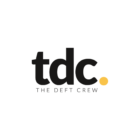In the ever-evolving landscape of digital marketing, content creation and blogging have emerged as potent tools to establish online authority, engage with audiences, and, of course, outrank competitors on Google. To succeed in this endeavour, you need more than just run-of-the-mill content. You need content that stands out, captivates readers, and earns those coveted top positions on Google’s search results pages.
The Power of High-Quality Content
Crafting Engaging Headlines:
One of the most critical elements of your content creation and in the blogging is the headline. It’s the first thing readers see, and it’s what entices them to click. Make your headlines both informative and intriguing. Incorporate relevant keywords naturally while maintaining a sense of curiosity. For instance, if your topic is “Digital Marketing Trends,” consider a headline like “Unveiling the Future: Digital Marketing Trends That Will Transform Your Strategy.”
Keyword Research and Integration:
Keyword research remains the backbone of SEO. Start by identifying relevant keywords and phrases using tools like Google Keyword Planner. Sprinkle these keywords strategically throughout your content, including the title, headings, and body. However, always prioritize user experience and readability over keyword stuffing. Google’s algorithms are smart and favour content that feels natural.
The Art of Compelling Blog Posts
Long-Form Content:
When it comes to blogging, size does matter. Google tends to favour longer, comprehensive articles that provide in-depth insights. Aim for blog posts that exceed 1,000 words whenever possible. These not only rank higher but also showcase your expertise in the field.
Unique and Valuable Insights
Avoid regurgitating information that’s readily available elsewhere. To stand out, provide unique perspectives, case studies, or personal experiences related to your topic. Be the source readers turn to for fresh insights and actionable advice.
Visual Appeal
Incorporating visuals is another vital aspect of engaging blogging. Include high-quality images, infographics, and videos to break up text and enhance understanding. Visual content not only keeps readers engaged but can also improve your SEO ranking.
Building Backlinks for Authority
Guest Blogging
Contributing guest posts to reputable websites within your industry can significantly boost your online authority. When you link back to your own content naturally within these posts, you create valuable backlinks that Google recognizes as a sign of your credibility.
Collaborative Content
Partner with influencers, industry experts, or complementary businesses to create collaborative content. This not only expands your reach but also generates high-quality backlinks as others naturally link to your collaborative efforts.
On-Page SEO Optimization
Meta Descriptions
Craft compelling meta descriptions that summarize your content’s essence and encourage clicks. These brief snippets serve as a sneak peek into your content and can influence a user’s decision to visit your page.
Header Tags
Properly format your content with header tags (H1, H2, H3, etc.) to create a hierarchical structure. Search engines use these tags to understand the organization of your content making it easier to index and rank.
User Experience and Mobile Optimization
Responsive Design
In an era where mobile usage continues to soar, having a mobile-responsive website is non-negotiable. Google prioritizes mobile-friendly sites, so ensure your content looks and performs well on smartphones and tablets.
Page Load Speed
Google values speed. Optimize your website’s loading times to enhance the user experience. Tools like Google PageSpeed Insights can help you identify areas for improvement.
Measuring and Adapting:
Analytics
Leverage tools like Google Analytics to monitor the performance of your content. Track user behavior, engagement, and conversion rates. This data provides insights into what’s working and where improvements are needed.
A/B Testing
Experiment with different content approaches and strategies. A/B testing allows you to compare variations of your content to see which resonates best with your audience.
In the competitive realm of digital marketing, mastering the art of content creation and blogging is key to dominating Google rankings. By crafting high-quality content, optimizing for SEO, building authoritative backlinks, and prioritizing user experience, you can propel your website to the top of search results. Remember, consistency and adaptability are crucial. Stay informed about the latest SEO trends and continuously refine your content strategy. With dedication and expertise, you can ensure that your content not only ranks well on Google but also captivates and converts your target audience.
